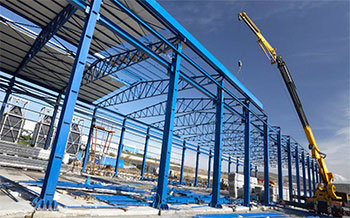
RICE MILL PLANT LAYOUT DESIGN CONSTRUCTION

Rice mill plant layout design consultant
The design of the rice milling plant must to be ready in a manner that empower constant tasks of different units. It would be ideal for it to be skillful to the point that it accomplish the fullest usage of attainable limit and guarantee a economical power utilization. The land necessary of the plants ought to be worked out contemplating the necessity of inner roads, drainage system and fringe walls and different variables. The layout ought to be fit for completing the needs of both single and Multipass units.
TThere is an extraordinary potentiality of Rice Mill Processing in the paddy enlarge region of the India. All you really want is an extraordinary design and layout that can covenant full use of the relative multitude of variables. Laying out a rice factory is a favourable business, yet just when it is created with authorized design, arrangements and construction.
In order to maximise the efficacy and functionality of rice milling facilities, a rice mill plant layout design consultant is crucial. Specialised in designing layouts that enhance workflow, make the most use of available space, and guarantee smooth effort in rice mills, these professionals offer their facility. They are highly proficient in placing machinery, obey to industry standards, and rigorously understanding the rice milling process.
Productivity can be greatly increased, operating costs can be decreased, and overall output quality can be raised with an effectual layout. In order to regulate the unique prerequisite of mill owners, consultants work with them to investigate various aspects such as future expansion plans, equipment integration, and space constraints. A adequate Rice Mill Plant Layout Design Consultant fundamentally helps rice milling businesses succeed and last.
How to choose Rice mill plant layout design consultant
The key to maximising productivity in the rice milling process is selecting the applicable rice mill plant layout design consultant. Examine the consultant's background and track record in creating layouts for projects that are similar to yours first. Seek for knowledge of process, equipment placement, and space maximizing. It is pivotal that the consultant has a thorough understanding of the latest enlargement in rice milling technology and market trends.
Take into account their complement to alter designs in order to satisfy specific needs and legal requirements. It is important to give priority to inexpensive solutions and competent energy use. Verify the consultant's communication potential and cooperation level by asking for associating from past customers. A well-designed rice mill plant layout that supports your operative objectives is conclusively ensured by hiring an experienced and extensible consultant.
Rice Mill Plant Layout Design Construction
Rice, as one of the world's most crucial staple foods, plays a pivotal role in global agriculture and food security. To meet the growing demand for rice, competent rice milling plants are pivotal. The design and construction of a rice mill plant are hypercritical factors that regulate its productivity, competence, and imperishable. This essay explores the key thought in designing and constructing a rice mill plant layout, maintain the significance of thoughtful planning, technological upgrading, and sustainability principles.
Planning and Design
Site Selection: Selecting the suitable location for a rice mill plant is paramount. Factors such as immediacy to paddy fields, transportation infrastructure, and obtainability to utilities should be carefully evaluated. A well-chosen site can reduce transportation costs and enhance overall efficiency.
Layout Design: The layout design of a rice mill plant should optimize the flow of operations. Key areas in the layout include the paddy storage area, cleaning and husking section, milling and polishing section, rice storage, packaging, and administrative offices. Proper zoning and clear pathways are essential to prevent cross-contamination and ensure a smooth workflow.
Equipment Selection: Selecting the right equipment is crucial to achieving high milling efficiency. Modern rice milling machines incorporate technologies like rubber rollers, optical sorters, and computerized control systems to minimize grain breakage and improve the quality of the final product. The choice of equipment should align with the scale and budget of the plant.
Construction
Structural Design: The structural design of the rice mill plant must account for the weight and vibrations of the machinery, as well as factors such as seismic resistance and durability. Adequate ventilation and insulation should also be incorporated to maintain the quality of stored rice.
Utility Systems: Robust utility systems are essential for the smooth operation of a rice mill. These include electrical systems, water supply, waste disposal, and fire protection systems. Energy-efficient solutions, such as solar panels and rainwater harvesting, can reduce operational costs and environmental impact.
Environmental Considerations: Sustainability is a growing concern in rice mill construction. Implementing eco-friendly practices, such as waste recycling, effluent treatment, and emissions control, can minimize the environmental footprint of the plant. Compliance with local environmental regulations is mandatory.
Technological Advancements
Automation and Control: Modern rice mill plants benefit from automation and control systems that enhance efficiency and reduce labor costs. These systems can monitor and optimize processes, detect and address issues in real-time, and provide data for quality control and maintenance.
Data Analytics and AI: The integration of data analytics and artificial intelligence (AI) can improve yield prediction, quality control, and supply chain management. AI-driven sorting and grading systems can enhance the uniformity of rice products and reduce waste.
Sustainability
Resource Efficiency: Efficient use of resources, such as water and energy, is crucial for sustainability. Implementing technologies like water recycling, energy-efficient lighting, and solar power generation can reduce operational costs and environmental impact.
Waste Management: Proper waste management is essential to minimize the environmental impact of rice milling plants. This includes the recycling of byproducts such as rice husks and bran, as well as responsible disposal of wastewater.
The design and construction of a rice mill plant require meticulous planning, adherence to technological advancements, and a strong commitment to sustainability. A well-designed layout, appropriate equipment selection, and construction that considers structural integrity and utility systems are fundamental. Incorporating modern technologies and sustainable practices not only improves efficiency but also reduces environmental impact. As the global demand for rice continues to rise, investing in well-designed and environmentally responsible rice mill plants is key to ensuring food security and sustainable agriculture for future generations.
WAREHOUSE STEEL STRUCTURAL CONTRACTORS
Warehouse Shed Cost - Estimation Per Sq ft

Why To Choose Warehouse Builders?
Learn More
Essential Blogs for the Construction Industry
Learn More
Pre-Engineered Building Future of Construction Industry
Learn MoreOur Construction Works
When you choose us, you'll feel the benefit of 20 years' experience of industrial construction services. With our capacity to meet the mass requests, we have had the option to take special care of the requirements of our significant clients.
Warehouse Construction
The most common material used for warehouses is steel, creating a pipe system that supports the outside cladding & roof.

Industrial Construction
Industrial construction deals with factories, power plants, warehouses, and other highly specialized facilities.

PEB
Manufacturers
Pre-Engineered Building is the fundamental based design which directly manufactured by the PEB Manufacturers association.

PEB
Contractors
PEB is the ideal choice for any kind of construction needs whether it is for the individual reason/for the business reason.

Pre-Engineering Building
Pre-Engineering Building are broadly utilized in the residential just as industrial sector for its unparalleled attributes.

PEB Steel
Building Construction
Steel is heat proof, meaning it will not totally stop a fire. Steel is one of the most durable materials for construction.

